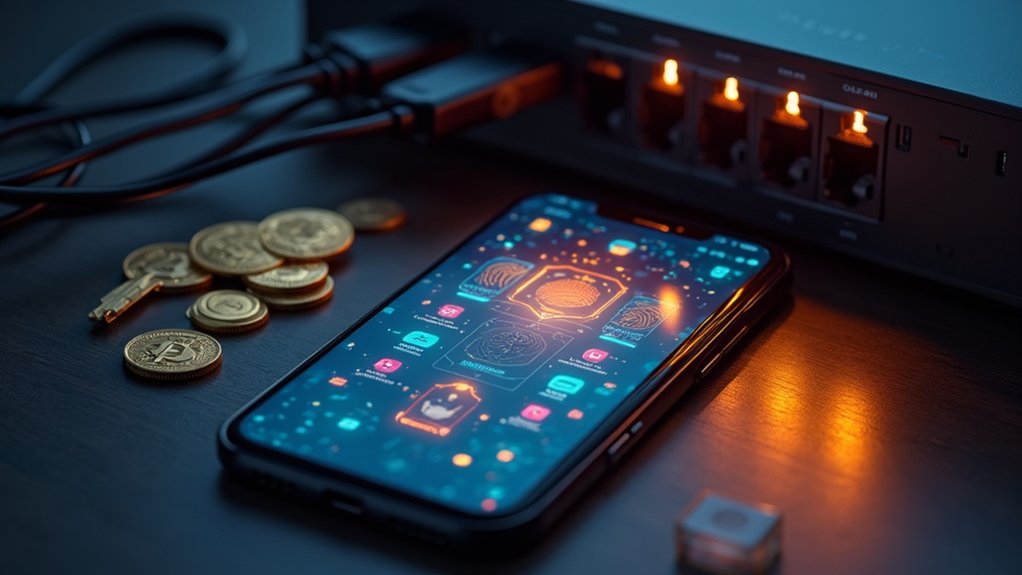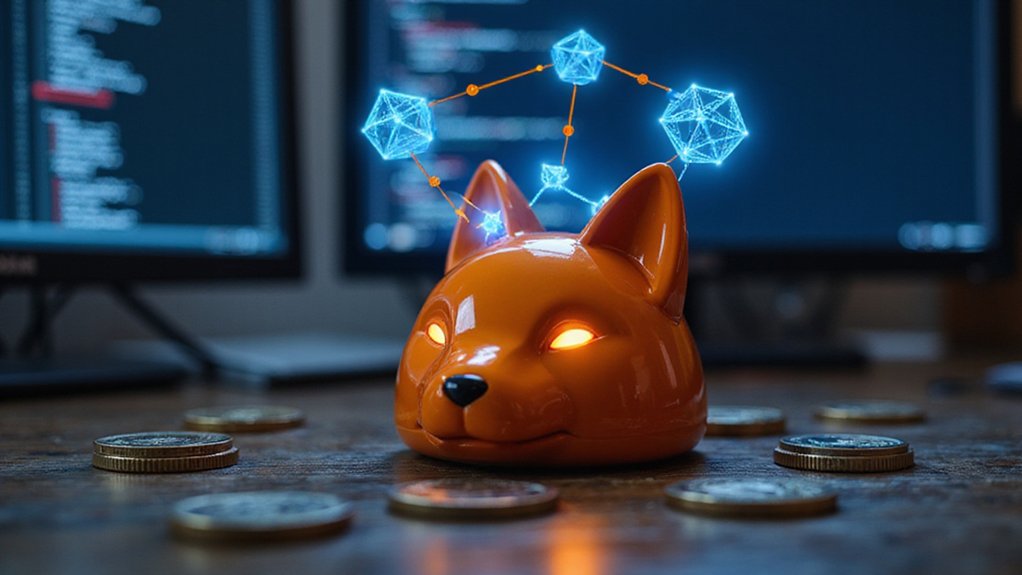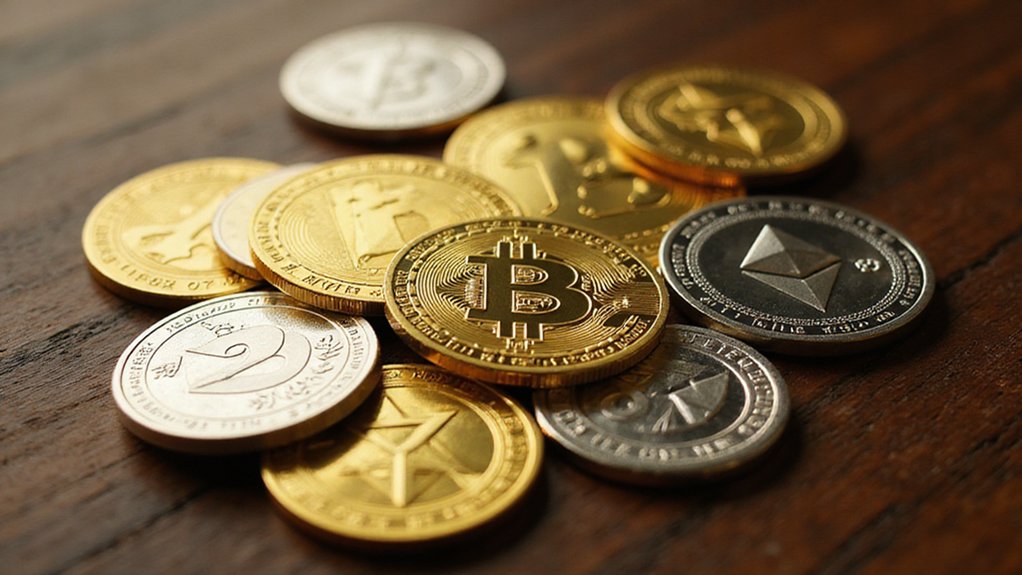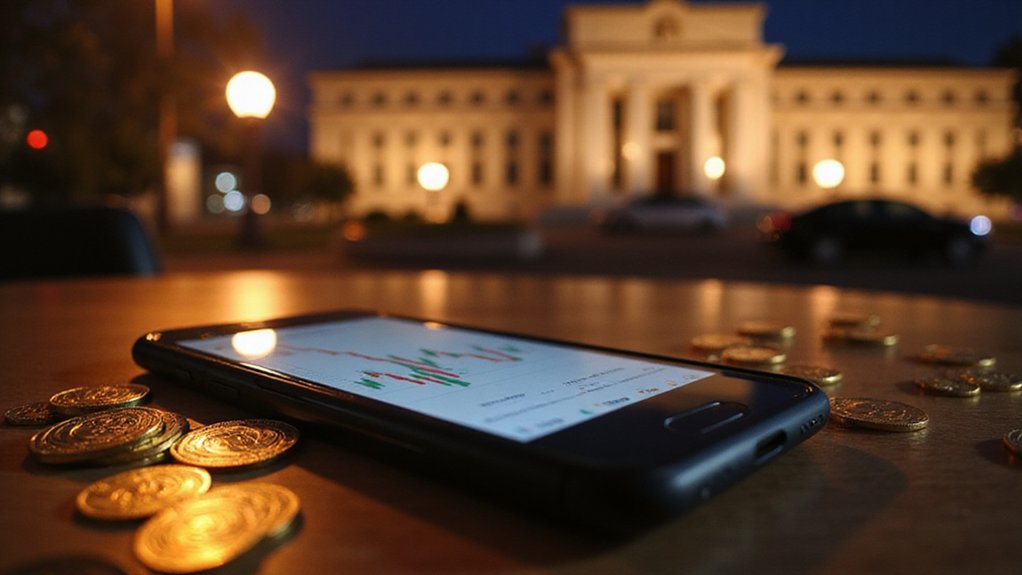Coinbase Wallet functions as a self-custody digital asset storage solution, granting users complete control over their private keys—a stark departure from the custodial exchange model where Coinbase holds your assets. The wallet supports hundreds of cryptocurrencies across multiple blockchain networks, integrates with decentralized applications, and employs biometric authentication alongside AI-driven fraud detection. Users can participate in DeFi protocols, manage NFTs, and execute cross-wallet transfers while traversing the peculiar landscape of speculative digital assets with institutional-grade security features that protect highly volatile investments.
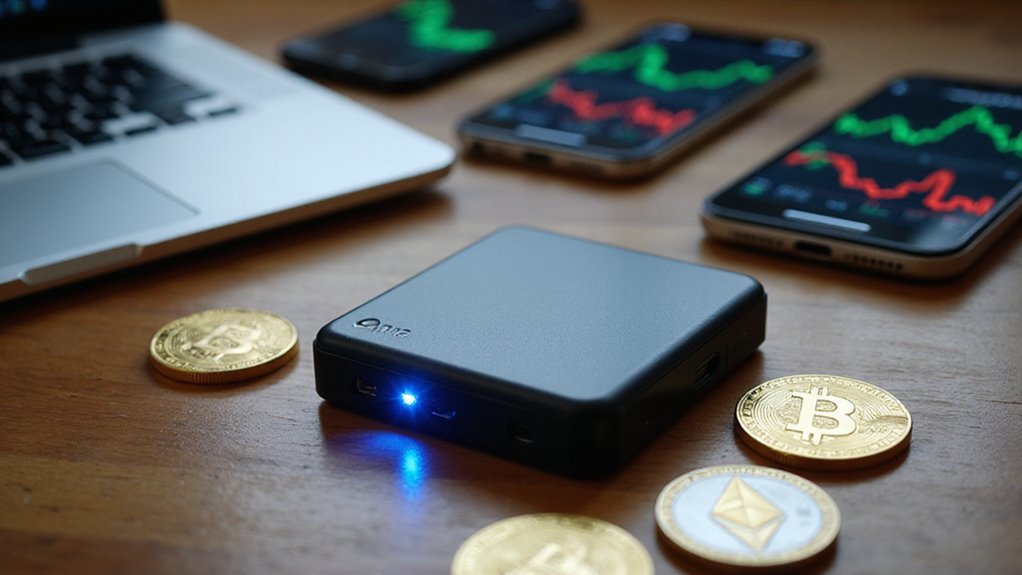
In an ecosystem where the phrase “not your keys, not your crypto” has become something of a battle cry among the digitally initiated, Coinbase Wallet positions itself as the self-custody solution for users who prefer to maintain direct control over their digital assets rather than entrusting them to centralized exchanges.
Unlike its custodial counterpart (the standard Coinbase exchange), this wallet operates on the principle that users should retain full sovereignty over their private keys—a distinction that matters considerably when regulatory winds shift or platforms experience technical difficulties.
The wallet supports an extensive array of cryptocurrencies, from Bitcoin and Ethereum to lesser-known altcoins, while simultaneously managing NFTs across multiple blockchain networks.
Supporting everything from mainstream cryptocurrencies to obscure digital collectibles, the wallet embraces the chaotic diversity of blockchain’s expanding universe.
Security architecture encompasses biometric authentication, two-factor authentication, and encrypted data storage, though one might reasonably question whether the average user appreciates the irony of using cutting-edge cryptographic protection to secure speculative digital assets. Modern crypto wallets increasingly incorporate AI-driven detection systems to identify and prevent fraudulent transactions before they occur.
The wallet provides seed phrase backup functionality, acknowledging the uncomfortable reality that lost keys mean permanently inaccessible funds—a feature that traditional banking would find rather unforgiving.
The platform’s integration capabilities extend beyond simple storage, offering native access to decentralized applications, DeFi protocols, and blockchain gaming platforms.
Users can engage in yield farming, staking, and lending activities directly through the interface, while transaction simulation features provide previews of potential outcomes—particularly valuable when gas fees fluctuate wildly and smart contract interactions carry inherent risks.
Cross-wallet transfers between Coinbase Wallet users reduce transaction costs, creating a semi-closed loop that somewhat defeats the purpose of decentralization while offering practical benefits.
The wallet’s multi-network support spans various blockchain ecosystems, enabling users to navigate the fragmented landscape of competing protocols and their respective tokens. This architecture accommodates hundreds of thousands of different cryptocurrencies and tokens, from major assets like Solana and Dogecoin to every ERC-20 token imaginable.
User experience design prioritizes accessibility through intuitive navigation and organized asset management, recognizing that mainstream adoption requires interfaces that don’t require computer science degrees to operate effectively.
Username functionality allows for simplified crypto transfers, though this convenience layer adds centralized elements to an ostensibly decentralized system.
The wallet’s global availability across over 120 countries reflects the borderless nature of cryptocurrency, even as regulatory frameworks remain decidedly local and increasingly complex.
Frequently Asked Questions
Can I Transfer Funds Between Coinbase and Coinbase Wallet?
Users can indeed transfer funds between Coinbase and Coinbase Wallet, though the process requires maneuvering blockchain mechanics rather than simple internal transfers.
Moving assets from the custodial exchange to the self-custody wallet involves standard crypto withdrawals to specific addresses, while reverse transfers require sending to Coinbase deposit addresses.
Network fees apply to both directions, and—naturally—selecting incorrect networks remains an excellent way to permanently lose one’s digital assets.
What Fees Does Coinbase Wallet Charge for Transactions?
Coinbase Wallet itself charges zero transaction fees—a rejuvenating anomaly in today’s fee-heavy crypto landscape.
Users pay only blockchain network fees (gas fees) that compensate miners and validators, which fluctuate based on network congestion and transaction complexity.
These fees go directly to the blockchain, not Coinbase, since the wallet operates as a non-custodial service where users control their private keys and interact directly with decentralized networks.
Is Coinbase Wallet Available in All Countries?
Coinbase Wallet enjoys global accessibility through its mobile app and browser extension, though the devil lurks in regulatory details.
While users worldwide can download and utilize the wallet for crypto-to-crypto transactions and decentralized storage, fiat on-ramps remain geographically restricted to roughly 40 countries.
African and Asian users often find themselves relegated to crypto-only functionality—a limitation that transforms “global availability” into something rather more nuanced than initially advertised.
Can I Stake Cryptocurrencies Directly Through Coinbase Wallet?
Yes, users can stake cryptocurrencies directly through Coinbase Wallet, with Ethereum being the primary offering via their Shared ETH Staking feature. This eliminates the traditional 32 ETH minimum requirement—a rather democratizing development.
The wallet also supports staking for Cardano and Cosmos, with assets pooled through Coinbase’s validators. Users maintain custody of their private keys while earning rewards, though withdrawal periods apply during unstaking processes.
What Happens if I Lose My Recovery Phrase?
Losing one’s recovery phrase fundamentally transforms digital assets into modern buried treasure—permanently inaccessible.
Coinbase Wallet’s non-custodial architecture means the company cannot retrieve funds or restore access, regardless of desperate pleas or sob stories.
The twelve-word phrase represents the sole key to one’s cryptocurrency kingdom; without it, those Bitcoin holdings become as unreachable as Atlantis.
No customer service magic, no technical wizardry—just irreversible financial oblivion.
